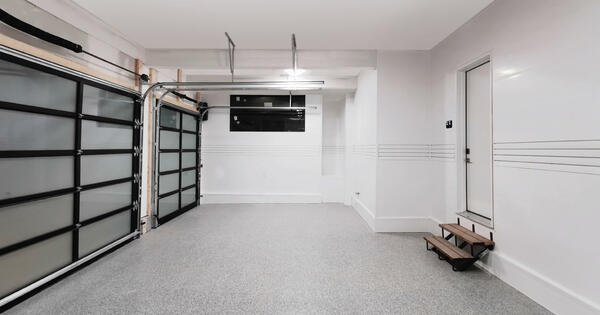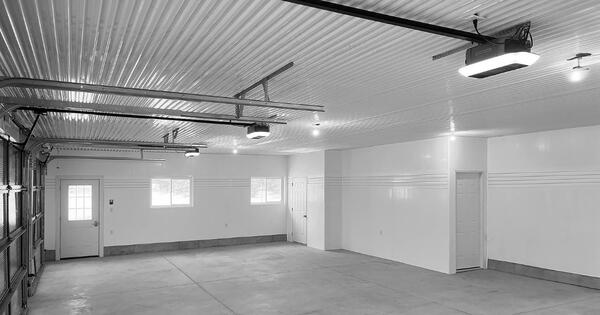This blog post is the first part of a three-part series on accessory dwelling units.
What do you do when the demand for housing dramatically exceeds the available supply, creating bidding wars and inflated prices? Make ADUs more accessible is one answer.
Accessory dwelling units (ADUs) are secondary, standalone living spaces – think tiny homes, backyard cottages, modular homes, and converted shipping containers – that are placed on existing property. Unlike traditional housing options like detached houses or condominiums, ADUs are more affordable due to their smaller size, shared infrastructure, and construction efficiency.
Across Canada and the U.S., provincial and state governments are changing the law to make ADUs easier to build and buy. Here’s what you need to know.
ADUs and the Evolving Real Estate Market
In Canada and the U.S., buying a home or finding a place to rent isn’t easy. Prices are going up, there's not enough housing, and everyone's competing for the same spots. This makes it hard for many people, especially first-timers, to buy a home or find a decent place to rent in the meantime. But here's where ADUs step in to help out:
- ADUs are more budget-friendly versions of regular houses, making it easier for homeowners to invest in additional property and offer cheaper rental options for tenants. They’re smaller, but still cozy and practical.
- If you're a homeowner, having an ADU means you can rent it out and earn some extra cash. That money can help with the mortgage and make owning a home less stressful.
- Having an ADU on your property makes it worth more. That's good news for homeowners as their property value can go up, and renters get the bonus of having more space.
- ADUs give you extra space that you can use in different ways. Maybe for family, friends, or even as a home office.
- ADUs add to the total number of homes available. This helps renters by giving them more options and reduces the competition for places to live.
- When ADUs are planned well and fit into existing neighborhoods, they help build up communities without changing the feel of the area. It's like adding without taking away.
But how are ADUs more affordable than traditional housing options like single-family homes or condos? Here's the scoop:
- They’re Smaller and Smarter: ADUs are usually smaller than regular houses, which means less money on building and materials. Some folks even go for ready-made ADU kits or pieces, which can be way cheaper than building everything from scratch.
- They Share Resources: ADUs use the same utilities and landscaping as the main house, so you save money by not doubling up on expenses. It's like splitting the bills with your house.
- They’re Quick and Efficient to Build: Building ADUs is faster, more efficient, and can often be done in a factory setting in the case of prefabricated units, saving money on labor costs.
- They Make Better Use of Land: ADUs make good use of the land you already have, without needing a big new development or rezoning.
- There are Lower Costs to Start: Some places give discounts on fees for ADUs, making them a more cost-effective choice compared to building larger housing projects. It's like getting a sale on your new home.
- They Can Access Nearby Resources: ADUs on residential properties get to enjoy things like schools, parks, and stores nearby, without needing to add new facilities.
- They’re Financially Incentivized: Getting money to build ADUs is often easy, with some places offering perks or loans to encourage people to build them. It's like getting a little extra support to make your home dreams come true.

Government Regulations Regarding ADUs in Canada and the U.S. Are Changing
For those looking to build or buy ADUs in Canada and the U.S., dealing with strict zoning laws has been a significant challenge. However, there's good news – Canadian and American governments see the upside in ADUs, and populous provinces and states are making changes so ADUs are more accessible for regular homeowners. Here's the breakdown.
In British Columbia:
In B.C., the housing rules used to limit construction to condos or single-family homes. However, as these became increasingly unaffordable: Enter Bill 44, the Housing Statutes (Residential Development) Amendment Act. This legislation relaxes zoning restrictions and tells local governments to update rules, allowing homeowners to:
- Build a small additional home (known as a secondary suite or detached accessory dwelling unit) without navigating complex processes,
- Develop three to four homes on their property,
- Or, in specific areas near busy bus stops, construct up to six homes.
This change enables homeowners to add a separate ADU without the usual red tape, making the approval process quicker and more straightforward. Anticipated results include around 293,000 new homes in B.C. over the next 10 years – providing more housing options for everyone.
In California:
California has been tackling its housing crisis with ADU reform since 2016 and has permitted 80,000 ADUs since then. In California, local governments:
- Can’t impose lot coverage or minimum lot size requirements.
- Can’t require replacement parking if a garage, carport, or covered parking structure is demolished to create an ADU or is converted to an ADU.
- Can’t impose impact fees on ADUs under 750 square feet.
Additionally, Homeowners Associations (HOAs) can’t prohibit or “unreasonably restrict” ADU constructions on single-family residential lots. And the state government continues to make building and buying ADUs easier and more affordable, and three key new bills went into effect on January 1, 2024:
- AB 1033 - Separate Sale Authorization: Local agencies could previously prevent the separate sale of ADUs from the primary dwelling. AB 1033 allows homeowners to sell one or more ADUs independently. Local agencies can permit ADUs to be sold as condominiums with approval from the California Department of Real Estate. Homeowners may opt for an HOA to manage shared property.
- AB 976 - Owner-Occupancy Extension: ADUs permitted between Jan. 1, 2020, and Jan. 1, 2025, were exempt from owner-occupancy conditions. Assembly Bill 976 extends this exemption indefinitely for new or converted ADU projects permitted after Jan. 1, 2025. Junior ADUs are still subject to owner-occupancy requirements.
- AB 434 - Pre-Approved ADU Plans: All California cities and municipalities must establish a pre-approved ADU plan scheme by January 1, 2025. Cities must review and accept submissions, typically from architects, for pre-approved plans. They may charge fees for accessing designs, processing, and modifications to meet specific property requirements.
In Ontario:
Now, let's turn to Ontario. The rules here were quite stringent regarding the number of additional units allowed on a property, unit sizes, and required parking spaces. However, recent changes under Bill 23 – the More Homes Built Faster Act – have relaxed these regulations:
- Residential properties can now host up to three units without requiring special permissions. This includes options like basement apartments, garden or laneway houses, duplexes, and triplexes.
- Municipalities are no longer allowed to dictate unit sizes or mandate more parking spaces than necessary.
- Units are exempt from development charges and parkland dedication fees.
These modifications simplify the process for regular homeowners to build or add extra living spaces to their properties. It's about offering more choices with fewer complications for a smoother housing experience.
In Washington:
Back south of the border, EHB 1337 was passed in Washington state in March 2023. EHB 1337 mandates that all Growth Management Act-planning local governments — regardless of population, including counties and cities — must comply with the following new requirements:
- All lots in “Urban Growth Areas” allowing single-family homes must allow at least two ADUs. These can be one attached ADU and one detached ADU, two attached ADUs, or two detached ADUs (which can be in one or two separate structures). Conversion of an existing structure like a detached garage is allowed.
- ADUs can’t be required to be smaller than 1,000 gross square feet in size.
- Setback requirements, yard coverage limits, tree retention mandates, or restrictions on entry door location can't be more restrictive than what's required for the principal unit.
- The owner of a lot with an ADU doesn't have to live in or occupy the ADU.
- Aesthetic standards and requirements for design review can't be more restrictive for ADUs than they are for principal units.
- There’s no longer a requirement for off-street parking for ADUs. There are restrictions on how much on-site parking a municipality can require, with a sliding scale for smaller-sized lots.
- No on-site parking standards may be applied to ADUs located within a half-mile of a major transit stop.
- Street improvements can’t be a condition of permitting ADUs.
- Impact fees for ADU construction can't be more than 50% of those for the main unit.
As the housing crunch continues, more provinces and states are sure to follow suit to make it easier to add an ADU (or two) to your property. But loosening restrictions doesn’t affect building code requirements. In many cases, there are even more code requirements to adhere to when building an ADU. I'll cover some of the most important building requirements you need to know about in B.C., California, Ontario, and Washington in the next post in this three-part series of all things ADUs.

PART 2: ACCESSORY DWELLING UNIT SERIES
Building ADUs To Code: What You Need to Know
Despite changes in zoning laws and government restrictions, there are still strict code requirements and land use regulations for building ADUs, which changes from province to province, state to state, and even city to city.






